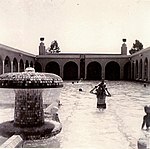Rock of Ages Festival

The Rock of Ages Festival is a Christian music festival held every October in Calistoga, California, United States. It was established in 1999 and has grown to become one of Northern California's biggest rock festivals. The Rock of Ages Festival presents speakers and music on four stages ranging in style from rock, rap, and Reggae to punk, big band, Latino, and more. The festival also presents workshops on subjects from marriage and relationships, to creation science and local ministry. The Rock of Ages Festival has alternative stages featuring sports shows including a skate park and pro skateboarders, BMX teams, motocross performers, sword swallowers, break dance teams, and more. In addition there is a Latino stage with Hispanic music and speakers, and a children's stage with entertainment, performances and interactive speakers featuring messages for families and kids. The Rock of Ages Festival has many vendors featuring a multitude of wares, services and food, mission projects, opportunities to take foreign mission trips, and organizations that support sponsoring needy children of the world.
Excerpt from the Wikipedia article Rock of Ages Festival (License: CC BY-SA 3.0, Authors, Images).Rock of Ages Festival
Grant Street,
Geographical coordinates (GPS) Address Nearby Places Show on map
Geographical coordinates (GPS)
| Latitude | Longitude |
|---|---|
| N 38.5853 ° | E -122.5867 ° |
Address
Grant Street
94515
California, United States
Open on Google Maps







